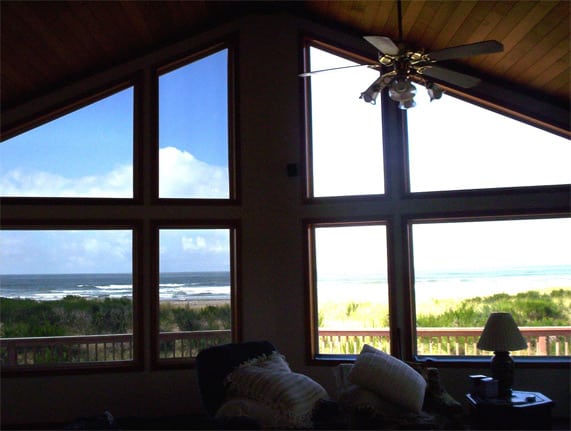Why Residential Window Tint is a Smart Investment for Homeowners
Why Residential Window Tint is a Smart Investment for Homeowners
Blog Article
Just How Residential Window Tinting Boosts Your Home's Energy Performance
Residential home window tinting offers a compelling option for homeowners looking for to enhance power efficiency within their living spaces. By applying specialized films to windows, it successfully lowers warmth transfer, thereby stabilizing indoor temperatures and reducing the requirement for extreme heating or cooling.
Comprehending Window Tinting
Comprehending window tinting is necessary for house owners looking for to improve both convenience and energy effectiveness in their space. Residential Window Tint. Window tinting involves the application of a thin movie to the inside or outside surface of glass windows. This film can significantly modulate the quantity of sunshine and warm that goes into a home, thus influencing interior environment conditions
There are different kinds of home window tinting movies offered, each with unique buildings. For example, colored films absorb solar power, while reflective movies disperse it away from the glass surface. Ceramic films supply an equilibrium of exposure and heat denial, making them a prominent choice amongst house owners. The efficiency of window tinting is usually determined by its Visible Light Transmission (VLT) percentage, which shows exactly how much light can travel through the movie.
Advantages of Energy Effectiveness
Window tinting not only boosts appearances however additionally plays a considerable duty in enhancing power efficiency within property spaces. By minimizing heat transfer with home windows, tinted movies create a much more secure indoor environment, which can bring about considerable decreases in power consumption for cooling and heating. This energy effectiveness converts into lower energy costs, providing house owners with significant long-term cost savings.

In addition, window tinting enhances the convenience of living spaces. By decreasing glow and blocking unsafe UV rays, colored windows produce a more positive atmosphere, which can lead to enhanced well-being for occupants. The protection versus UV rays also helps maintain furniture and floor covering from fading, adding to the long life of home things.
Exactly How Tinting Functions
Tinting films run through a mix of advanced products and technologies created to control the amount of solar power entering a home. Mostly composed of polyester, these films often integrate ceramic or metallic bits that mirror and absorb heat. This double capacity allows them to dramatically minimize the infiltration of ultraviolet (UV) rays and infrared radiation while permitting visible light to travel through.
The effectiveness of window tinting is determined by its solar warmth gain coefficient (SHGC), which indicates exactly how much solar power is sent through the window. Reduced SHGC worths are preferable as they signify higher warmth denial. Additionally, window tints can feature a variety of shades, enabling house owners to tailor their visual preferences while enhancing energy effectiveness.
Moreover, these movies work as an obstacle, preventing heat loss throughout colder months by reflecting interior warmth use this link back into the living area. This thermal insulation impact matches the air conditioning benefits gotten during warmer months, contributing to a balanced indoor climate year-round. By managing solar power efficiently, domestic window tinting not only enhances comfort but likewise plays an important duty in decreasing energy consumption and lowering energy costs.
Picking the Right Color

There are various types of window films offered, consisting of colored, metalized, and ceramic. Ceramic movies give superb heat control without compromising visibility and are extremely long lasting, making them a preferred selection.
Noticeable light transmission (VLT) is one more vital variable, as it shows the quantity of all-natural light that can travel through the colored glass. Home owners need to pick a color with a VLT that matches their illumination preferences while still offering sufficient glare reduction.
Additionally, assessing the solar heat gain coefficient (SHGC) can aid establish just how well a color can block warmth from sunshine. A reduced SHGC indicates far better warm control, ultimately enhancing energy effectiveness.
Setup and Maintenance Tips
Correct setup and maintenance are essential elements in taking full advantage of the benefits of household window tinting. To attain ideal results, it is suggested to employ a certified expert for installation. This makes sure that the tint is used correctly, staying clear of air bubbles, wrinkles, or imbalance that could endanger performance. Experts also utilize specialized strategies and tools, which can boost the resilience and performance of the tint.
Complying with setup, upkeep is crucial to lengthen the life of the home window movie. It is advised to wait at least 30 days prior to cleaning the tinted windows to permit the glue to treat fully.
Dealing with these issues without delay can stop additional damage and keep power efficiency. By sticking to these setup and maintenance tips, home owners can ensure their window tinting proceeds to offer significant power cost savings and comfort for years to come.
Verdict
In final thought, household window tinting offers as a reliable service for improving power efficiency within homes. By minimizing warmth transfer and obstructing unsafe UV rays, home window films add to lower energy usage and boosted indoor comfort.
Home window tinting entails the application of like it a slim film to the interior or exterior surface area of glass home windows. By reducing heat transfer with windows, colored movies develop an extra stable indoor climate, which can lead to considerable reductions in energy usage for home heating and air conditioning.The performance of home window tinting is gauged by its solar heat gain coefficient (SHGC), which indicates how much solar energy is transferred with the window. By handling solar energy successfully, property home window tinting not just improves convenience however additionally plays a vital role in reducing energy consumption and lowering click for more info energy costs.
By lowering warmth transfer and obstructing dangerous UV rays, home window movies contribute to lower energy consumption and boosted interior convenience.
Report this page